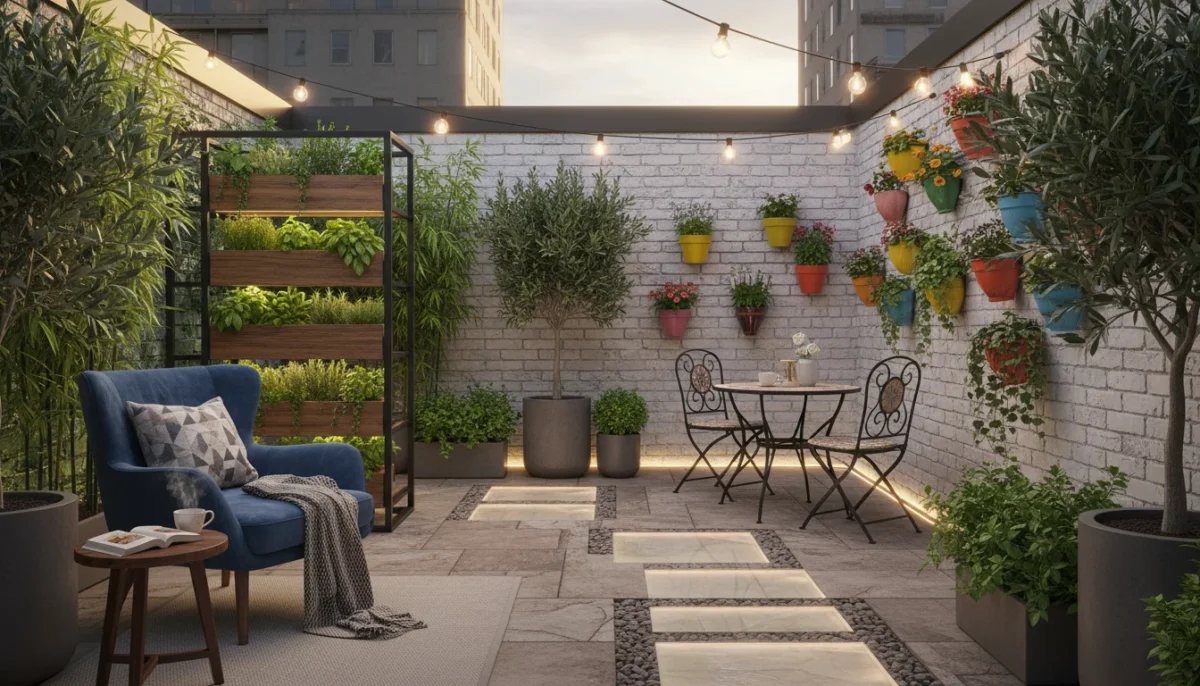Even the most compact outdoor space holds immense potential. Your balcony, patio, courtyard, or small backyard is not merely an afterthought, it is a blank canvas awaiting your creative touch. You can transform your tiny yard into a vibrant garden oasis, a personal sanctuary where beauty thrives and maintenance remains manageable. This guide empowers you with practical design strategies, sustainable choices, and actionable steps to achieve your ideal small yard design. Discover how careful planning and smart choices lead to a stunning, low-maintenance garden makeover, proving that even limited square footage yields impressive backyard ideas.
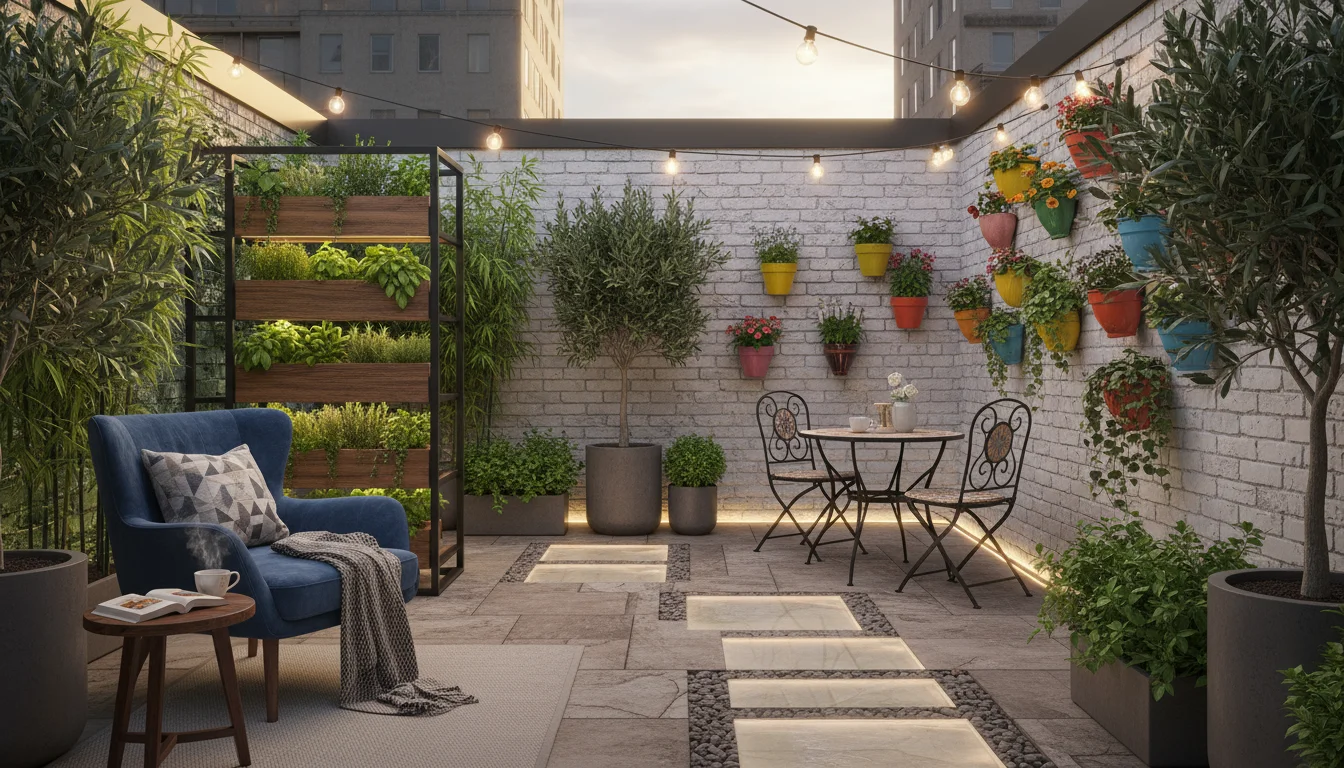
Small-Space Layouts: Maximizing Every Square Foot
The foundation of any successful small yard design lies in intelligent layout planning. You must define zones for different activities, ensure clear pathways, and maintain appropriate clearances. Consider your primary needs for the space. Do you want a dining area, a quiet reading nook, or a place to cultivate herbs? You can achieve multiple functions in a compact area through thoughtful design.
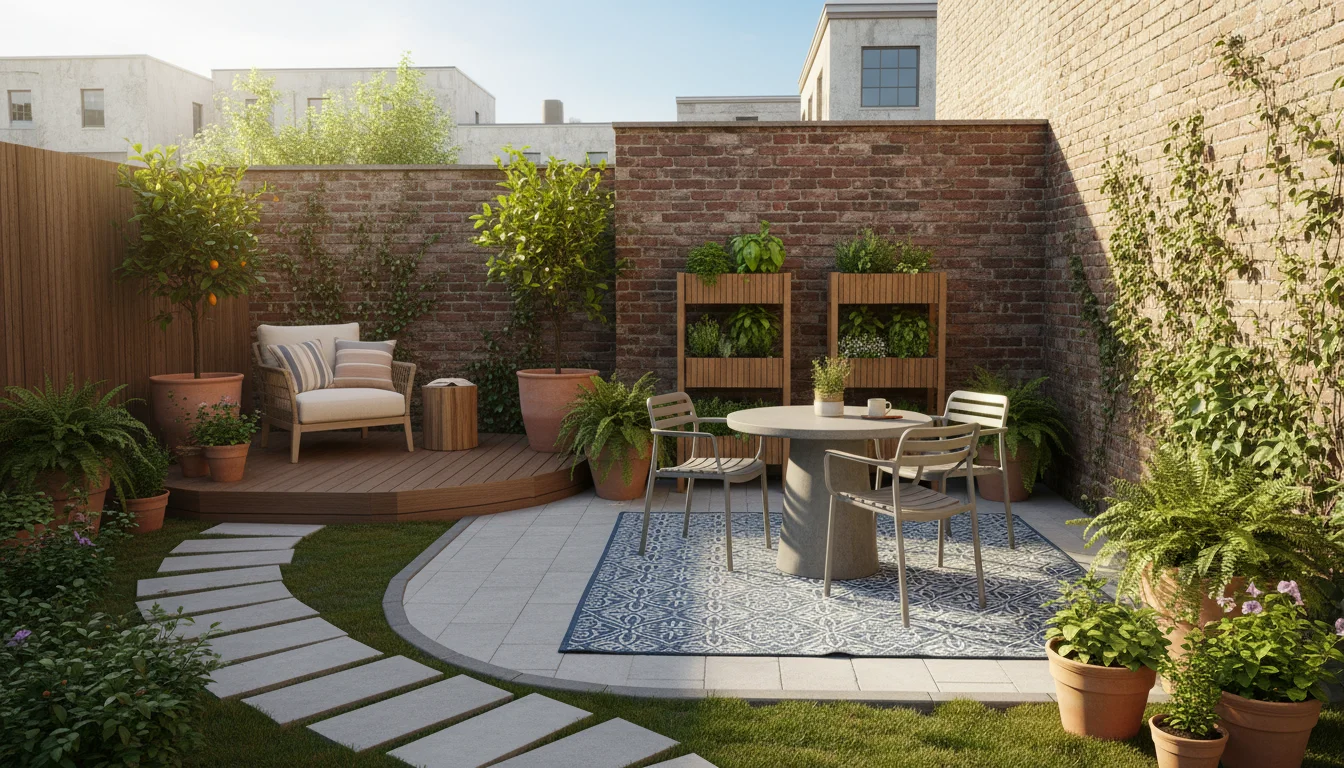
Defining Zones and Traffic Flow
Visualize your tiny yard as a series of interconnected rooms. Use rugs, subtle changes in paving materials, or strategically placed containers to delineate these zones. For instance, a small bistro table and chairs define a dining zone, while a comfortable armchair with a potted plant creates a reading nook. Clear traffic flow is paramount; you do not want to navigate obstacles constantly. Ensure pathways are wide enough for comfortable movement, generally a minimum of 24 inches for a single person, or 36 inches for two people to pass side by side. A common mistake in small spaces is overcrowding, which inhibits movement and makes the area feel smaller. Maintain a balance between plant material and open space.
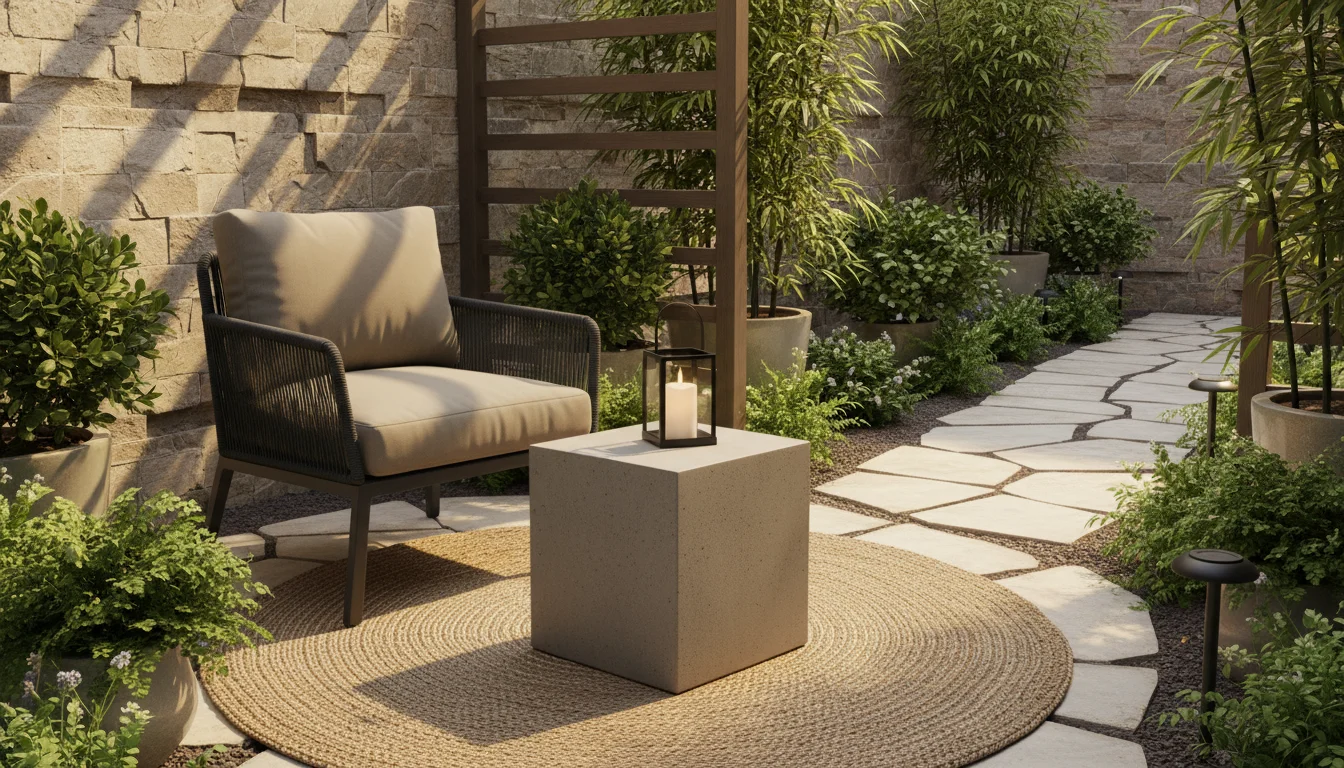
Understanding Clearances for Comfort
Specific furniture requires certain clearances for comfortable use. For example:
- Dining Area: Allow at least 24-30 inches from the edge of the table to any wall or obstruction for comfortable seating and pushing chairs back.
- Seating Areas: For a small lounge chair, ensure at least 18 inches of clearance around it. If you use a coffee table, leave 12-18 inches between the seating and the table for leg room.
- Pathways: As mentioned, 24-36 inches provides adequate passage.
You can achieve flexibility by using multi-functional furniture, such as benches with built-in storage or ottomans that double as extra seating or tables. Consider pieces designed for small spaces, like folding tables and chairs that store away when not in use. This approach allows you to reconfigure your layout as your needs change.
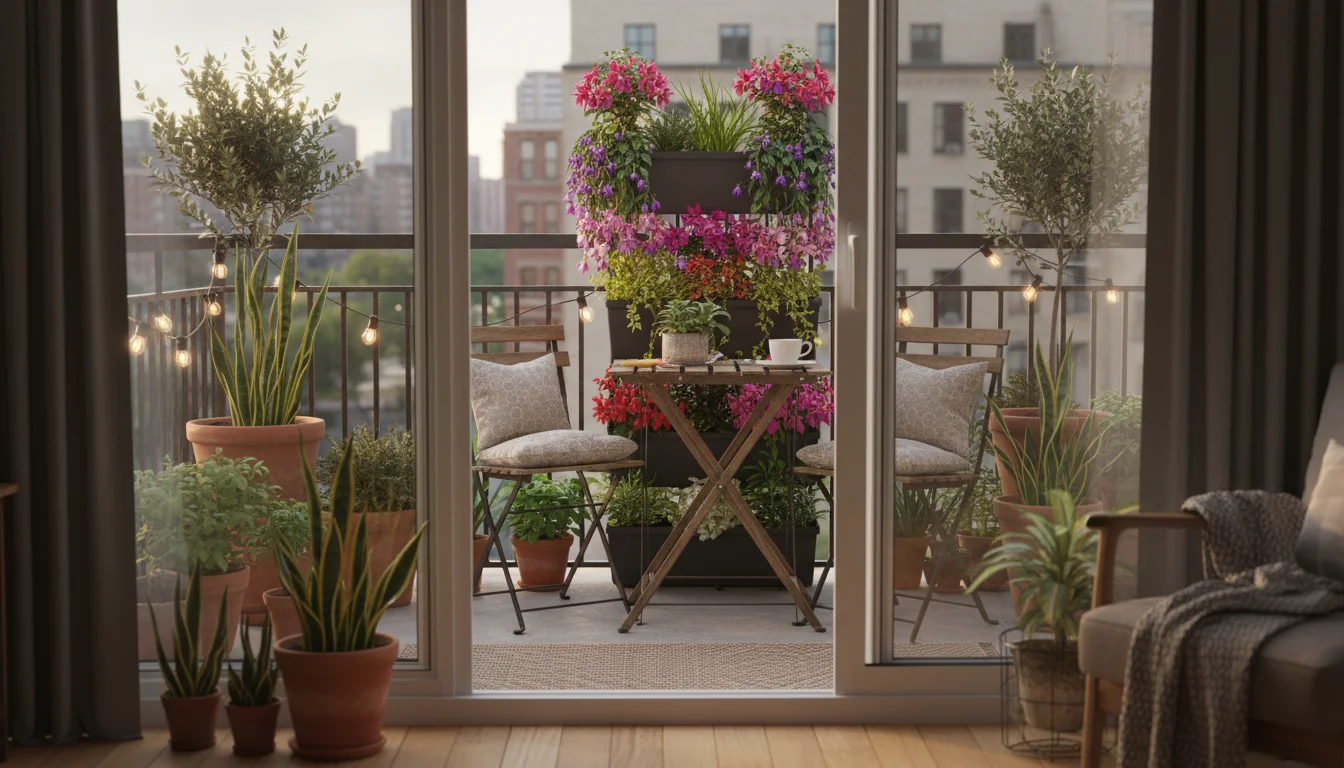
Crafting Focal Points and Strategic Sightlines
Every compelling garden design includes a focal point, which is the first thing your eye notices when you enter or view the space. In a tiny yard, you can use focal points to create depth and direct attention, making the area feel larger and more intentional. Consider the view from indoors as well, since your garden often serves as an extension of your interior living space.
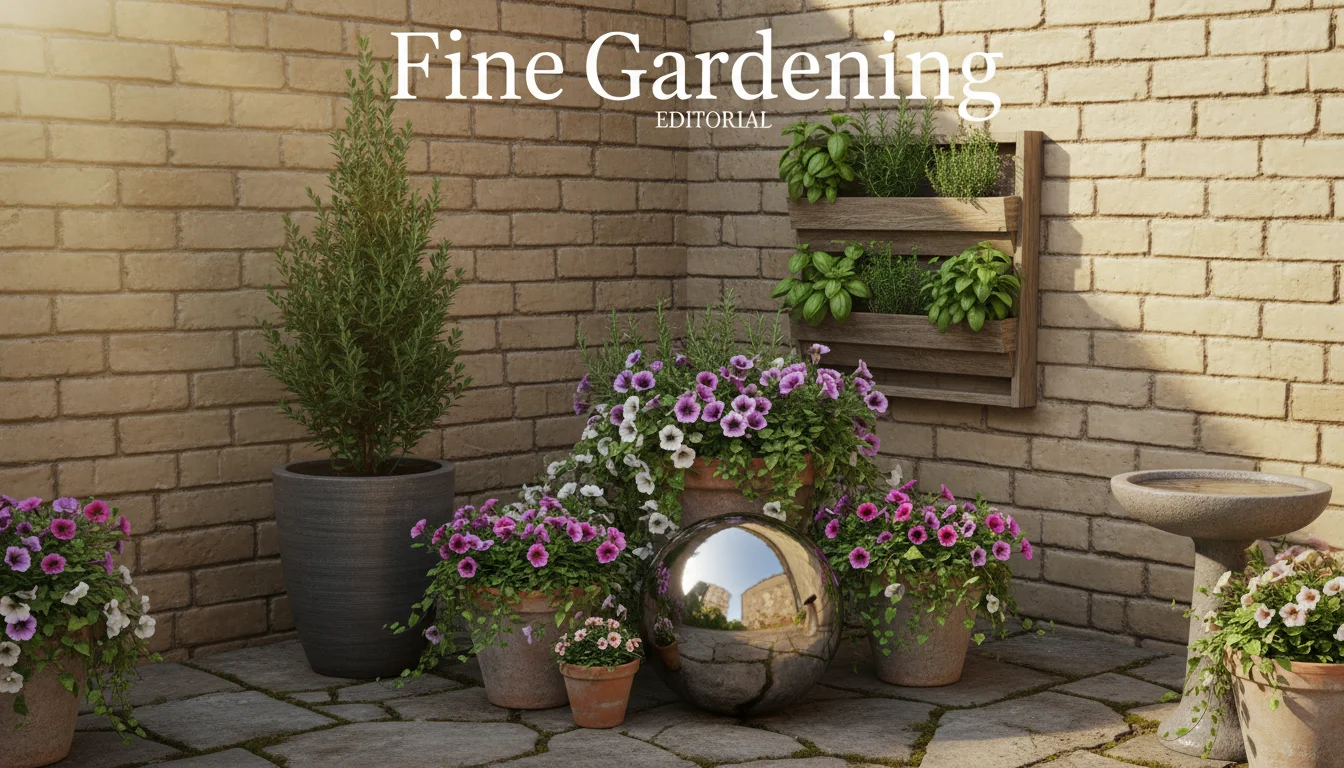
Creating Visual Anchors
A successful focal point grabs attention and encourages further exploration. It can be a sculptural element, a vibrant specimen plant, a small water feature, or a striking piece of garden art. Place your focal point strategically, perhaps at the end of a pathway or in a prominent corner. The key is to select something that provides visual interest without overwhelming the space. For example, a tall, slender columnar plant draws the eye upwards, adding perceived height, while a reflective garden sphere creates a sense of openness by mirroring its surroundings.
You can also create multiple, smaller focal points throughout the garden, leading the eye from one interesting element to the next. This creates a journey within your garden, even if the physical space is limited. Ensure these elements complement each other rather than competing for attention. A series of three identically potted plants leading to a small birdbath creates a strong sightline and a sense of progression.
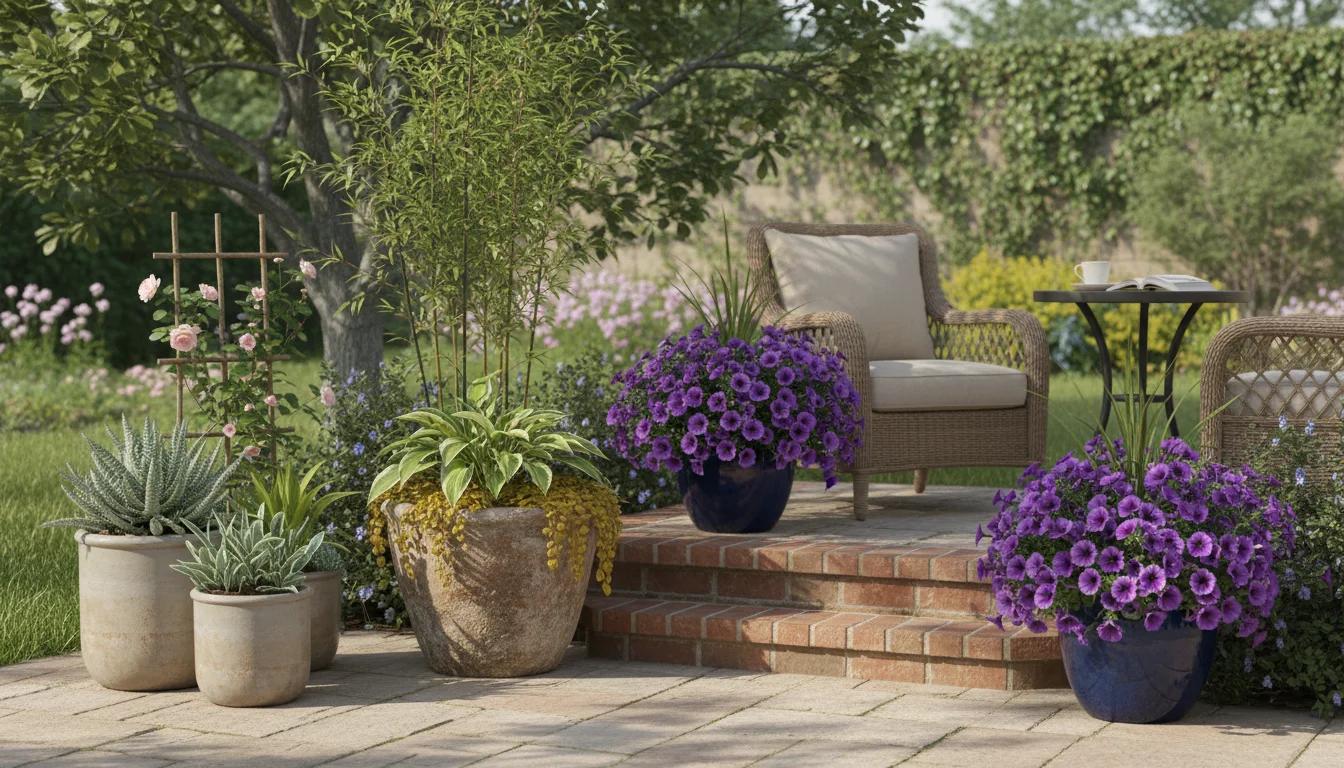
Symmetry Versus Asymmetry
You can use both symmetrical and asymmetrical arrangements to achieve different effects in a small garden.
- Symmetry: Creates a sense of formality, balance, and order. Placing identical planters on either side of a doorway or pathway achieves symmetry. This approach often works well in highly structured small courtyards or patios, giving them a classic, elegant feel.
- Asymmetry: Offers a more natural, dynamic, and relaxed aesthetic. It relies on balancing unequal elements, such as a large potted plant on one side balanced by a grouping of smaller containers on the other. Asymmetry often feels more organic and can be forgiving in unconventional small spaces, adding intrigue without rigid adherence to mirrored design.
Regardless of your chosen approach, ensure the overall composition feels balanced and harmonious. The goal is to create a scene that is pleasing to the eye, inviting you to linger and explore.
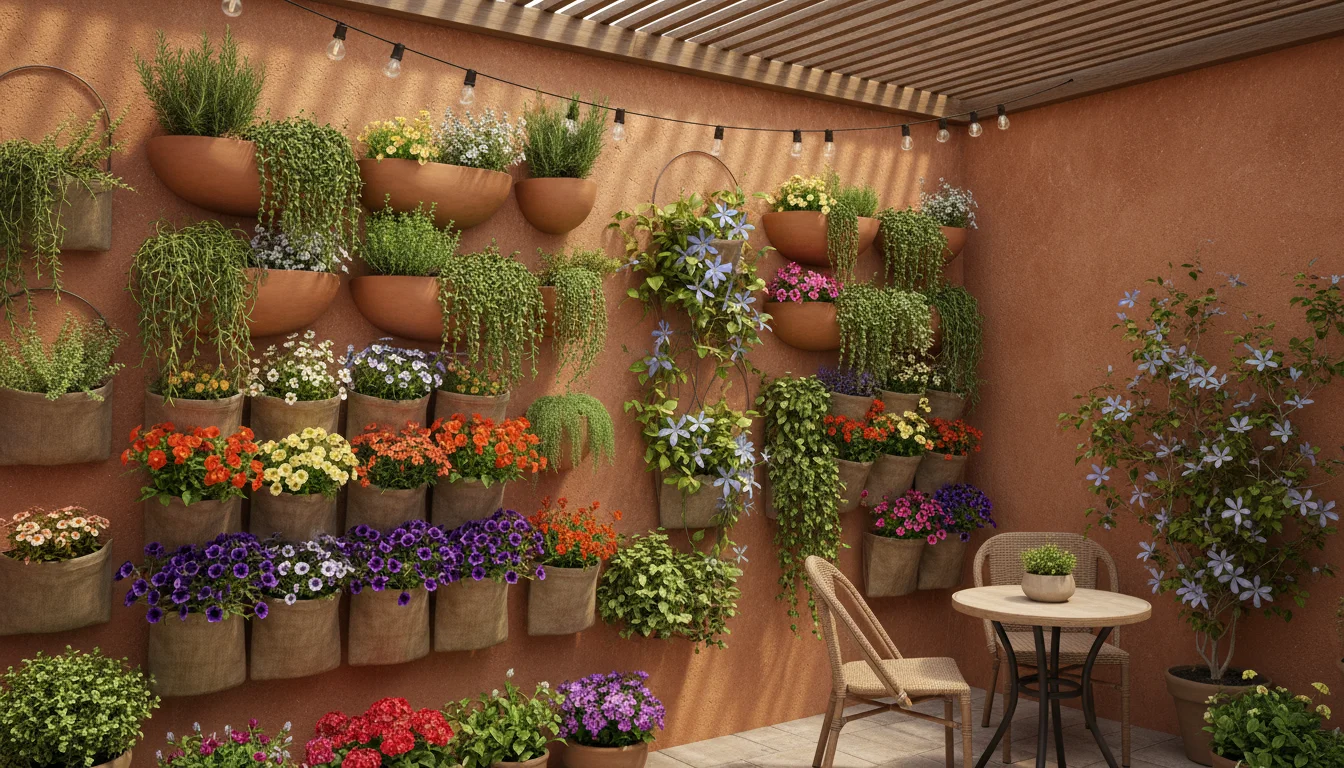
Embracing Verticality: Elevating Your Tiny Garden
When you have limited ground space, the only way to expand is up. Vertical gardening is an indispensable strategy for small yard design, allowing you to maximize planting areas and create lush, layered landscapes. This technique adds depth, privacy, and visual interest, transforming walls and fences into living tapestries.
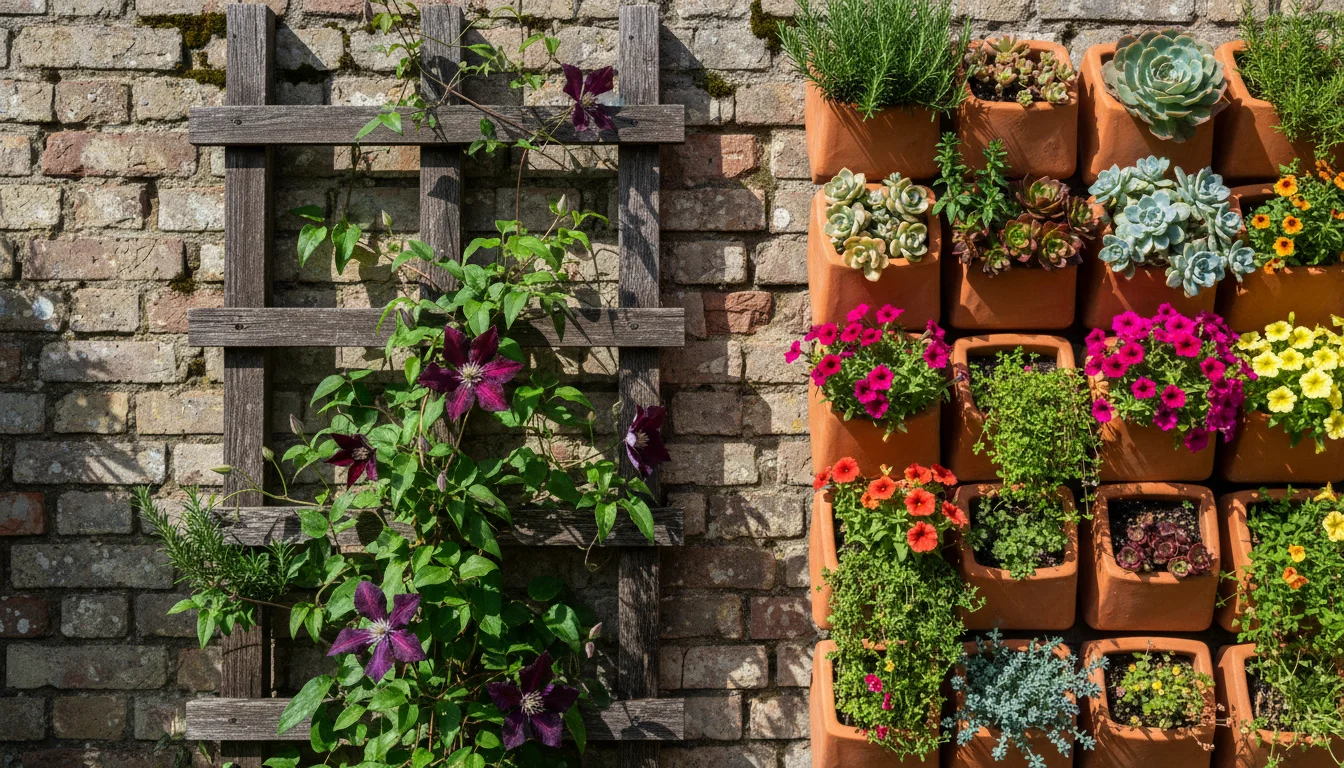
Utilizing Trellises and Wall Planters
Trellises are simple yet effective tools for vertical gardening. Install them against a wall or fence and train climbing plants such as clematis, jasmine, or edible peas and beans. The Royal Horticultural Society (RHS) recommends selecting trellises that are sturdy enough to support mature plant weight and made from weather-resistant materials like treated wood or metal. You can also integrate modular wall planters, pocket systems, or repurposed pallet gardens directly onto vertical surfaces. These allow you to grow a diverse range of smaller plants, from succulents and herbs to trailing annuals, creating a stunning green wall. You might use different sizes and shapes of wall planters to create a dynamic visual composition.
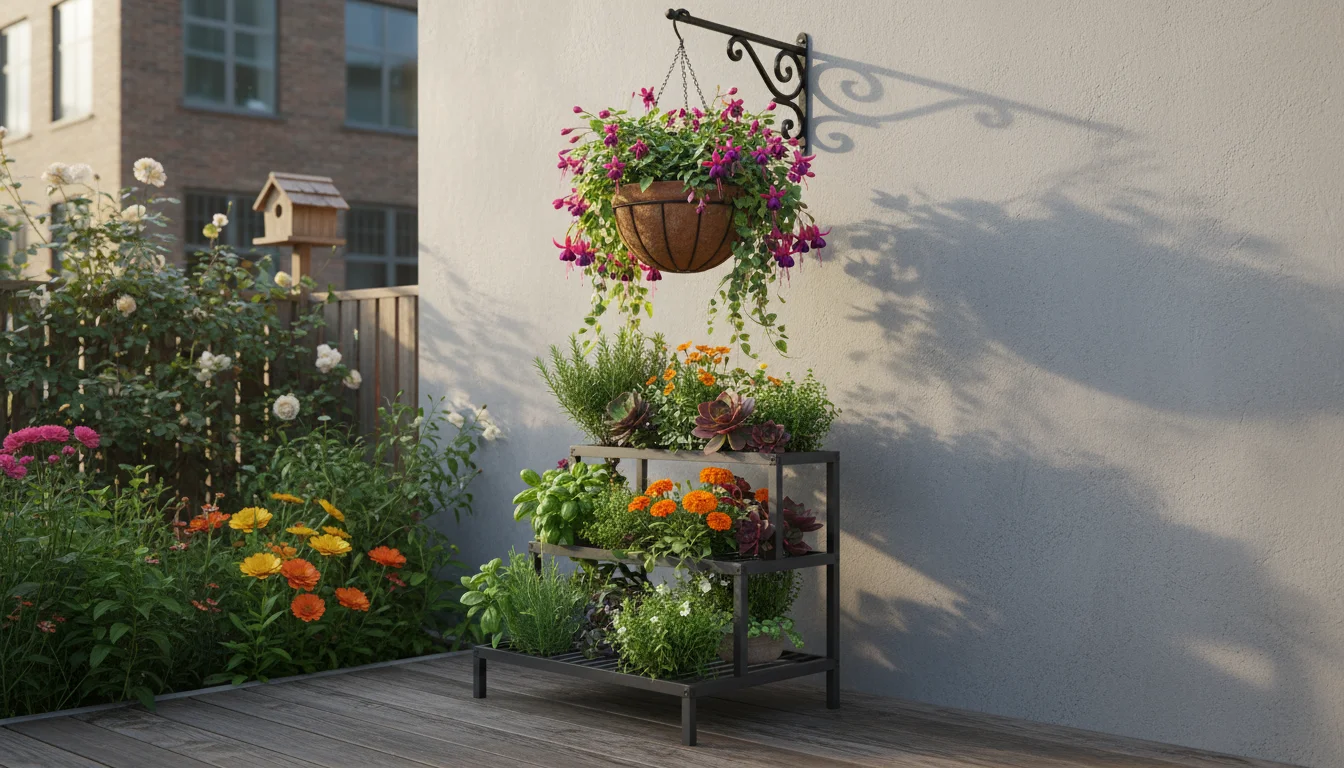
Tiered Stands and Hanging Baskets
Tiered plant stands provide multiple levels for pots, efficiently utilizing vertical space without requiring wall installation. These are excellent for showcasing collections of herbs, small flowering plants, or succulents. Look for sturdy stands made from materials that complement your overall design aesthetic. Hanging baskets offer another fantastic vertical solution. Suspend them from eaves, pergolas, or sturdy wall brackets. Fill them with cascading plants like petunias, fuchsias, or strawberries, allowing their foliage and flowers to spill over, adding softness and color at eye level. Ensure proper drainage and select plants that tolerate the specific light conditions of your chosen hanging location.
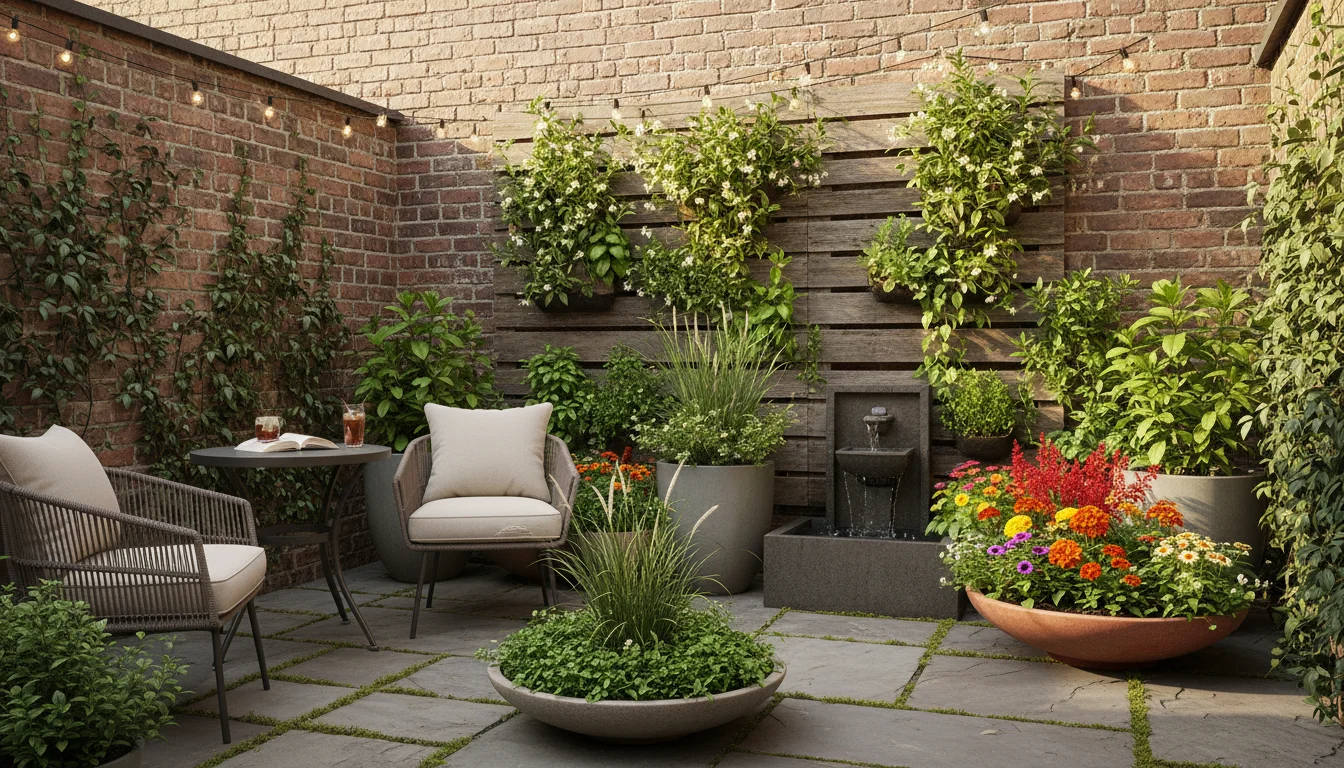
Creating Height Transitions with Layers
Beyond individual vertical elements, consider how different heights transition throughout your garden. This layering effect adds visual richness and mimics natural plant communities. Start with ground-level plants, introduce medium-height shrubs or containers, and then incorporate taller elements like small trees, vertical trellises, or elevated planters. For instance, a low-growing groundcover might lead to a mid-height ornamental grass, which then frames a tall, slender upright plant or a climbing vine on a trellis. This creates a dynamic landscape that draws the eye through the space, making it feel more expansive and inviting. Remember that proper spacing between layers allows each plant to thrive without competing for light or air circulation.
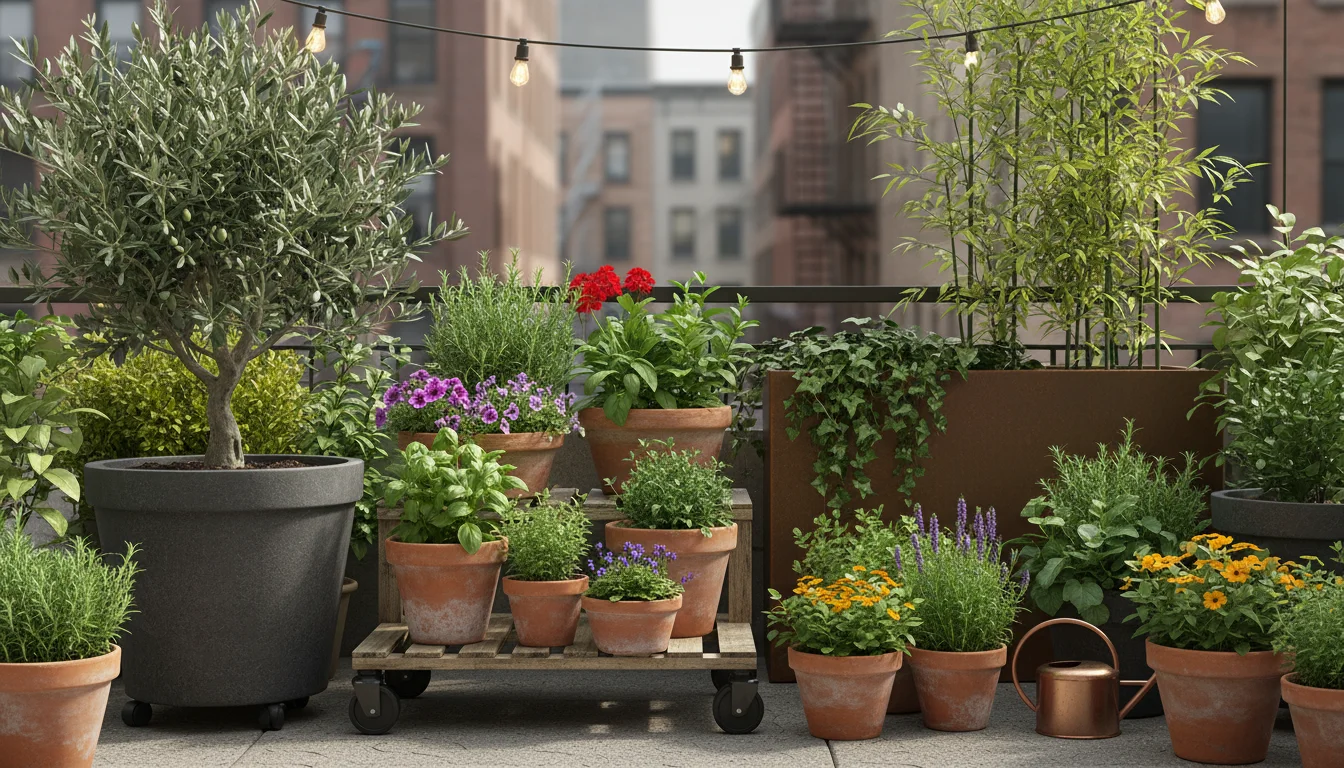
Mastering Container Strategy for Flexibility and Style
Containers are the backbone of most small yard designs, offering unparalleled flexibility, portability, and control over growing conditions. A thoughtful container strategy integrates aesthetics, plant health, and ease of maintenance into your garden makeover.
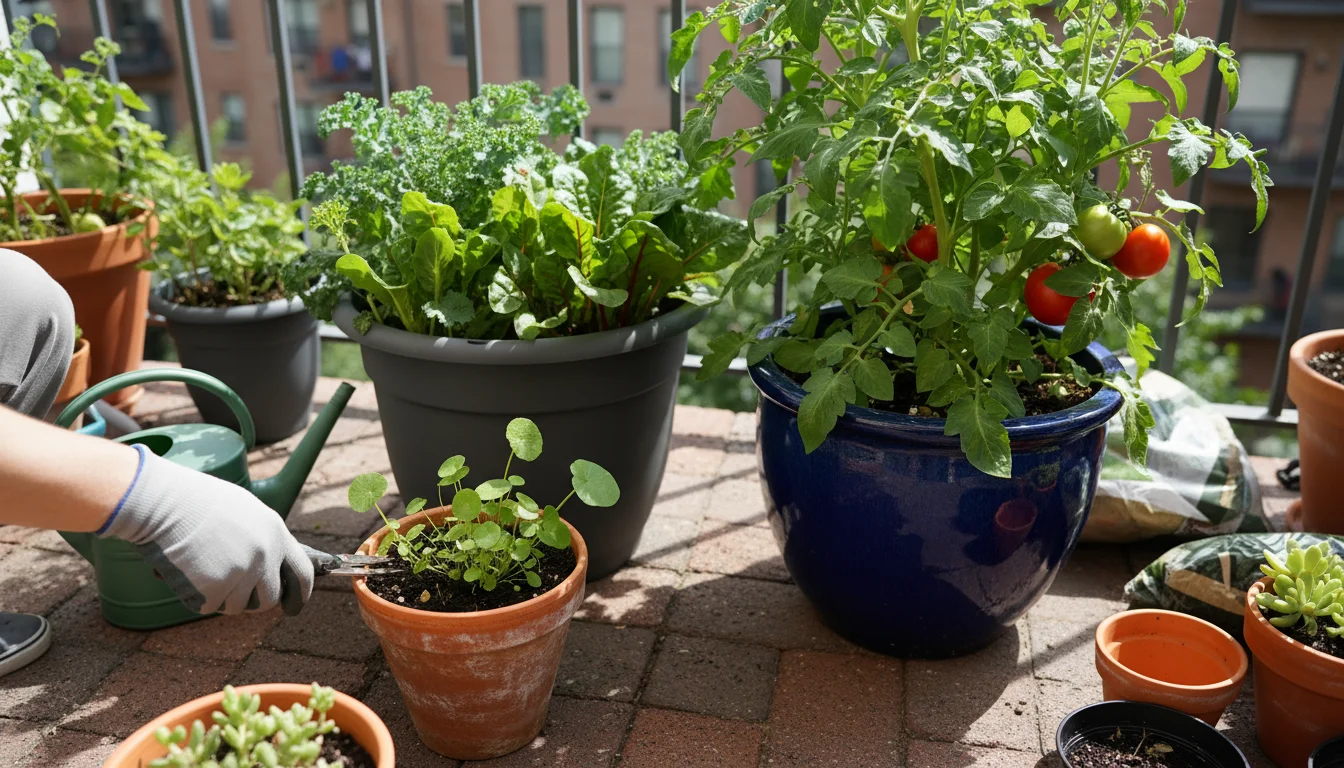
Selecting Appropriate Sizes and Materials
The size of your container directly impacts plant health. Smaller pots dry out faster and restrict root growth, necessitating more frequent watering and repotting. Larger containers provide more soil volume, greater moisture retention, and better insulation against temperature fluctuations. For most plants, opt for the largest container your space and design aesthetic allow. For example, a mature tomato plant thrives in a 15-20 gallon pot, while a small herb may be content in a 1-gallon pot. When selecting materials, consider their weight, durability, and how they complement your garden’s style. Terracotta offers a classic, breathable option, but it dries out quickly and can be heavy. Glazed ceramic pots retain moisture better and come in vibrant colors. Lightweight options like resin or fiber-reinforced plastic are excellent for balconies and movable arrangements. Metal containers add a modern touch, but absorb heat, potentially stressing roots. Wooden planters provide a rustic feel but require proper sealing and maintenance against rot.
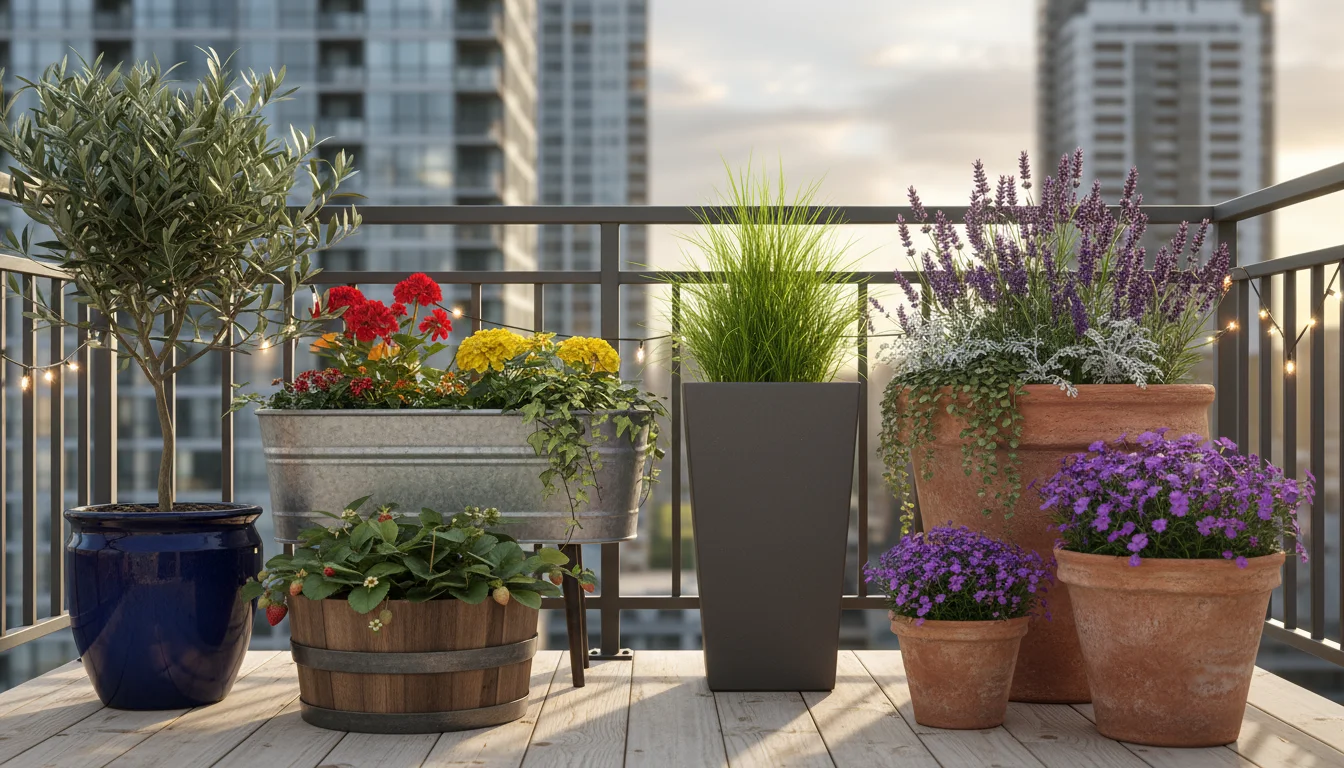
Color and Finish Cohesion
To create a cohesive and visually pleasing small yard design, aim for a unified aesthetic in your containers. You do not need every pot to be identical, but choose a limited palette of colors and finishes. For instance, you might use all black containers for a sleek, modern look, or a mix of natural terracotta and muted blue pots for a Mediterranean vibe. Consistent container choices create a sense of order and allow your plants to be the stars. Varying textures, like smooth glazed pottery alongside rough concrete, adds interest while maintaining color harmony. Avoid a haphazard collection of wildly different pots, which can make a small space feel cluttered and chaotic.
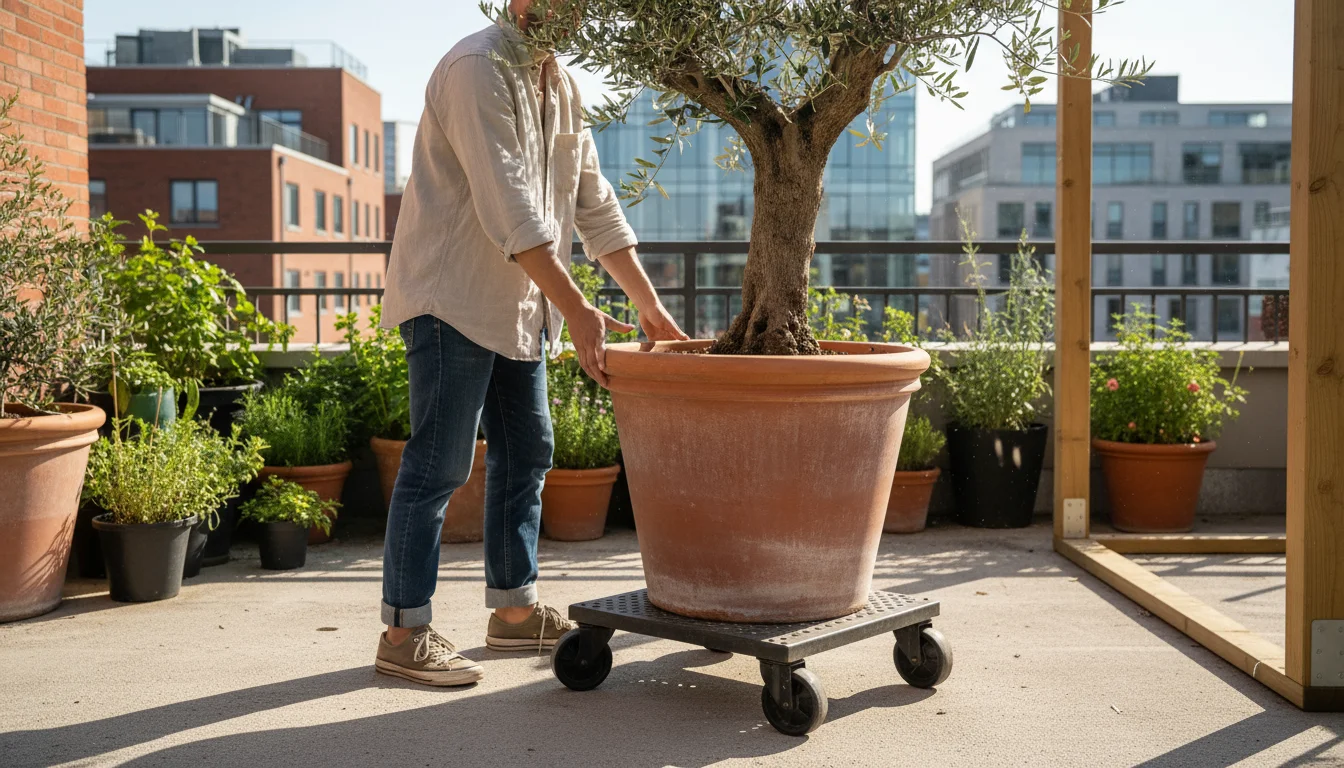
Wheeled Bases for Flexibility
Portability is a significant advantage of container gardening. Utilize wheeled bases or plant caddies for heavier pots, especially those containing shrubs or small trees. This simple addition provides immense flexibility, allowing you to:
- Rearrange layouts: Easily shift plants to create new zones or accommodate guests.
- Optimize light exposure: Move sun-loving plants into more direct light or shade-lovers to protection during intense heat.
- Protect plants: Roll tender plants indoors or under shelter during frost or severe weather.
- Facilitate cleaning: Move pots aside to sweep or hose down your patio or balcony.
Investing in sturdy, lockable wheeled bases greatly enhances the functionality and adaptability of your container garden. You gain the ability to refresh your backyard ideas with minimal effort.
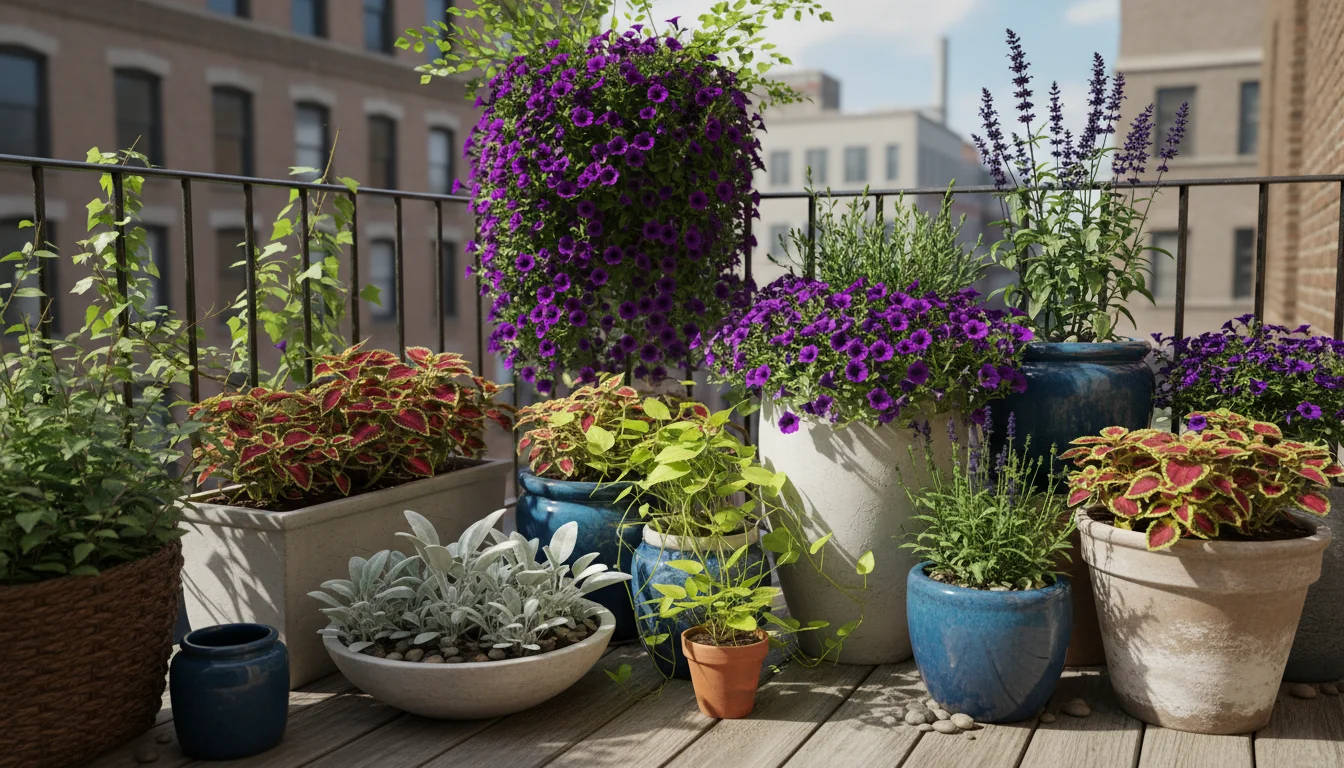
Designing with Color, Texture, and Seasonal Interest
The interplay of color and texture is crucial for creating visual richness in a small garden. These elements, combined with a plan for seasonal interest, ensure your garden remains captivating throughout the year, preventing it from feeling dull or static.
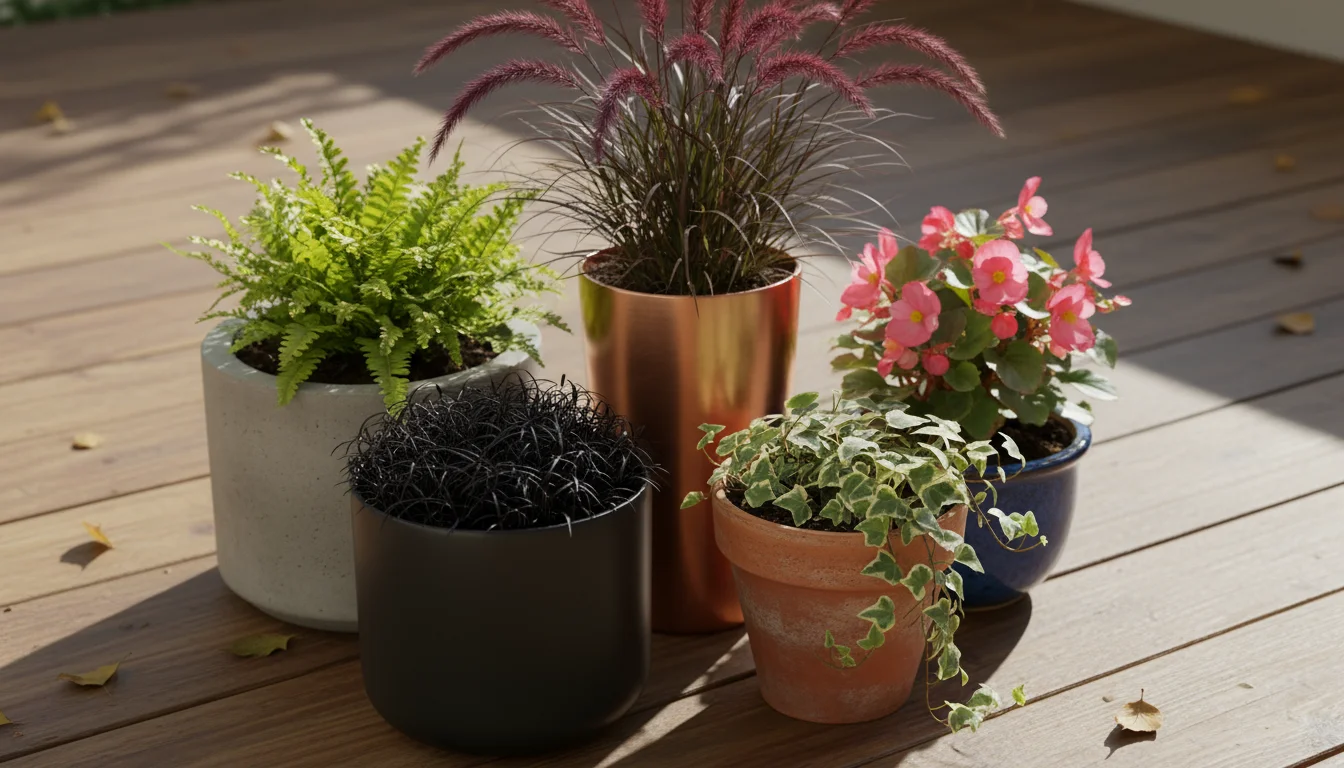
The Power of Foliage Contrast
While flowers provide bursts of color, foliage offers enduring texture and a consistent color palette. Prioritize plants with interesting leaf shapes, sizes, and colors. Think about contrasting broad, smooth leaves with delicate, feathery ones, or dark green foliage against lime green or variegated patterns. For instance, pairing a ‘Black Mondo Grass’ (Ophiopogon planiscapus ‘Nigrescens’) with the bright chartreuse leaves of a ‘Sweet Potato Vine’ (Ipomoea batatas) creates a dramatic and long-lasting visual impact. This emphasis on foliage means your garden maintains its appeal even when plants are not in bloom. You can also use foliage color as a design tool. Warm tones like reds and oranges appear to advance, making a space feel cozier, while cool tones like blues and purples recede, making a small area feel more expansive.
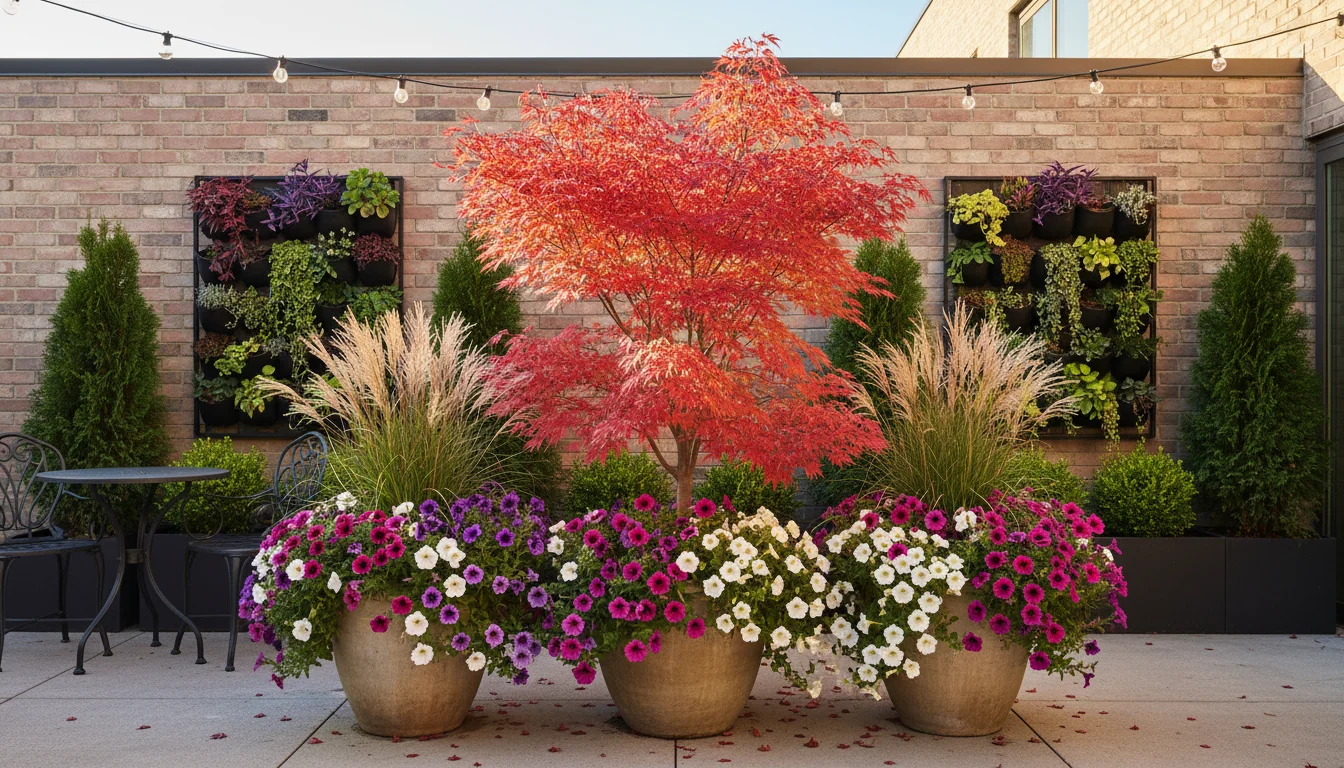
Planning for Seasonal Interest
A truly dynamic garden offers beauty in every season. You must select plants with varied bloom times, interesting bark, persistent berries, or attractive fall foliage. For early spring, include bulbs like crocus or daffodils in your containers. For summer, rely on continuous bloomers such as petunias, calibrachoa, or dwarf dahlias. As autumn approaches, introduce mums, ornamental grasses with attractive seed heads, or plants with striking fall color, like a dwarf Japanese maple. Even winter offers opportunities for beauty with evergreens, plants with interesting stem structures, or winter-blooming hellebores. A well-chosen palette of plants ensures that as one plant fades, another takes its place, keeping your garden vibrant and engaging year-round. This thoughtful approach transforms your small yard into a garden that constantly delights.
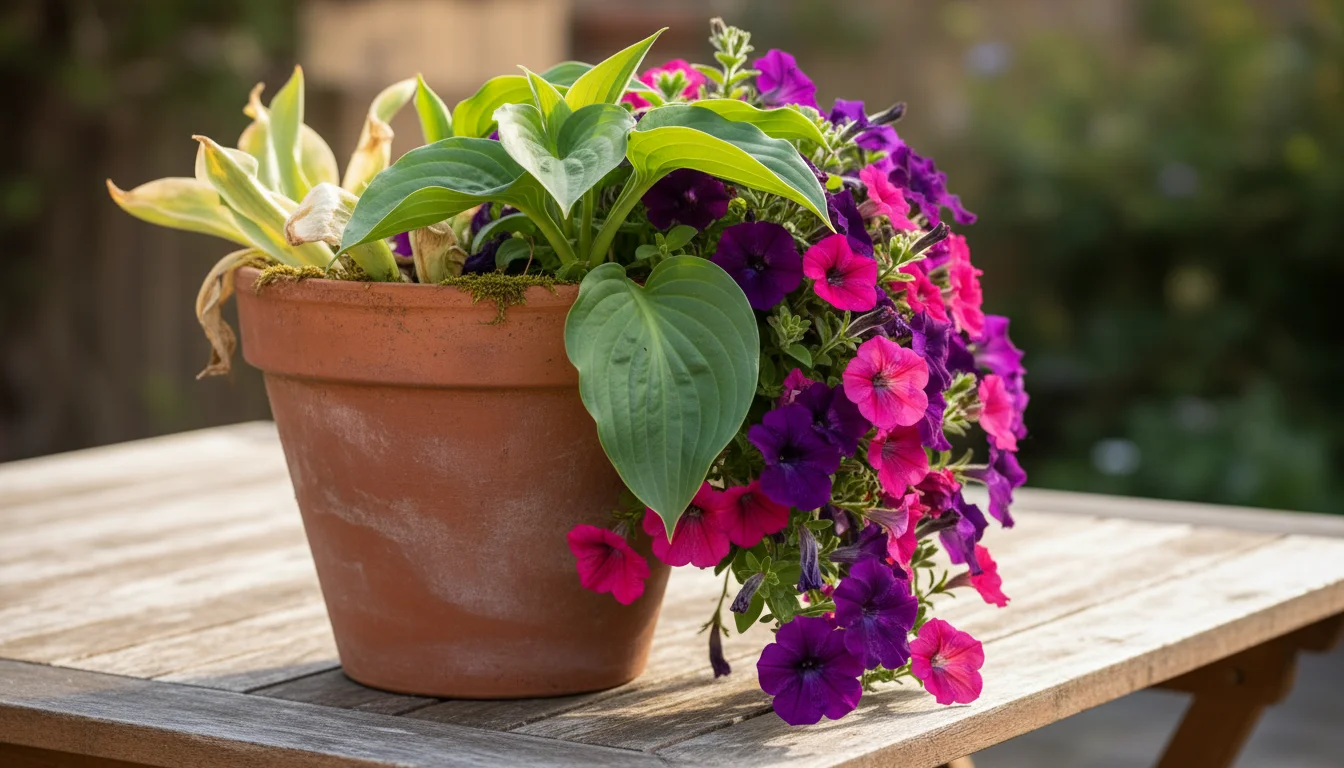
Creating a Harmonious Bloom Sequence
Beyond individual seasonal interest, consider how your plants will bloom in sequence. Aim for overlapping bloom times to maintain continuous color. You can achieve this by researching plant bloom periods and selecting a diverse range. For example, plant early spring bulbs underneath later-blooming perennials. As the bulbs fade, the perennials emerge and take over. Similarly, pair annuals that bloom all summer with biennials or short-lived perennials that provide a spring or fall show. This sequential blooming ensures your garden always offers something new to admire, preventing any dull periods. Consult reputable sources like the Chicago Botanic Garden or Brooklyn Botanic Garden for plant recommendations suitable for your climate and desired bloom times. This systematic planning makes your garden makeover a continuous success.
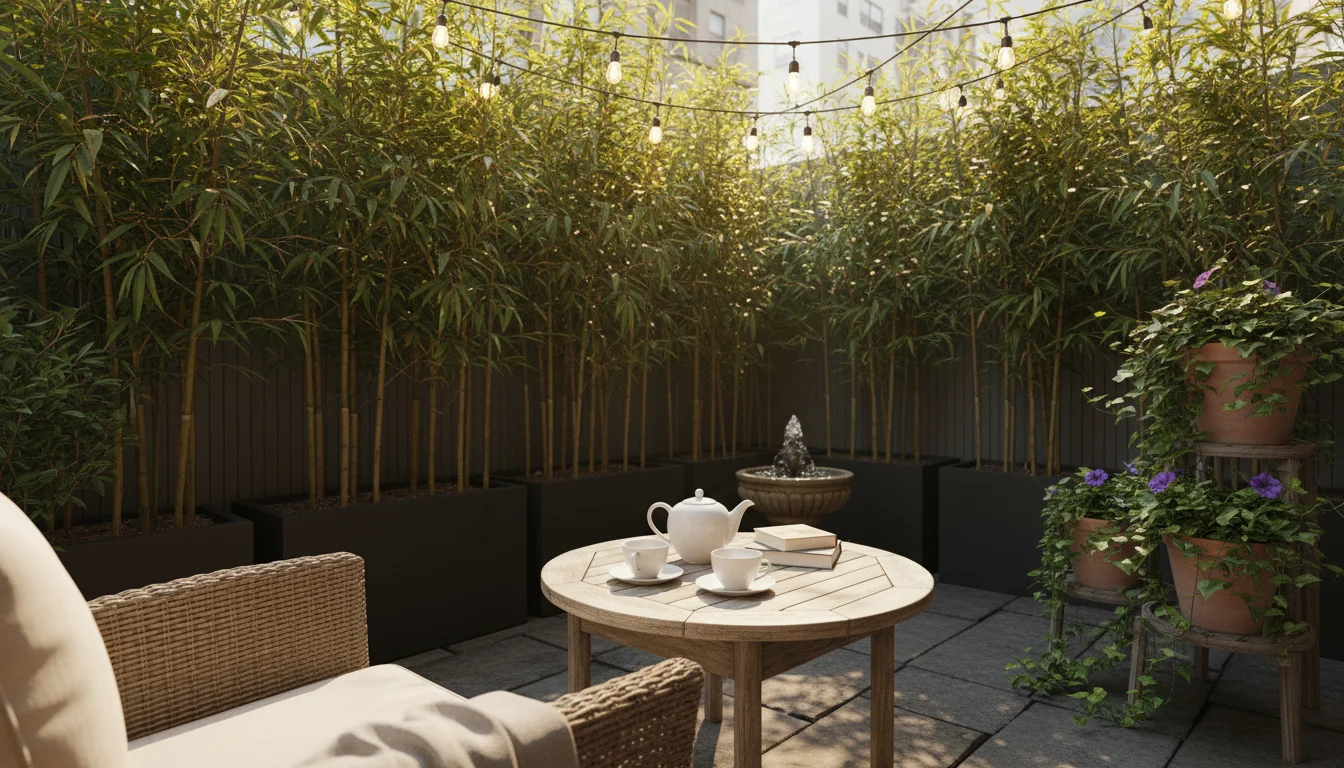
Creating Privacy and Serenity in Your Small Sanctuary
In compact urban settings, privacy becomes a key component of creating a true garden oasis. You want to feel comfortable and secluded in your space, free from prying eyes or disruptive noise. Thoughtful screening and sound softening elements transform your tiny yard into a peaceful retreat.
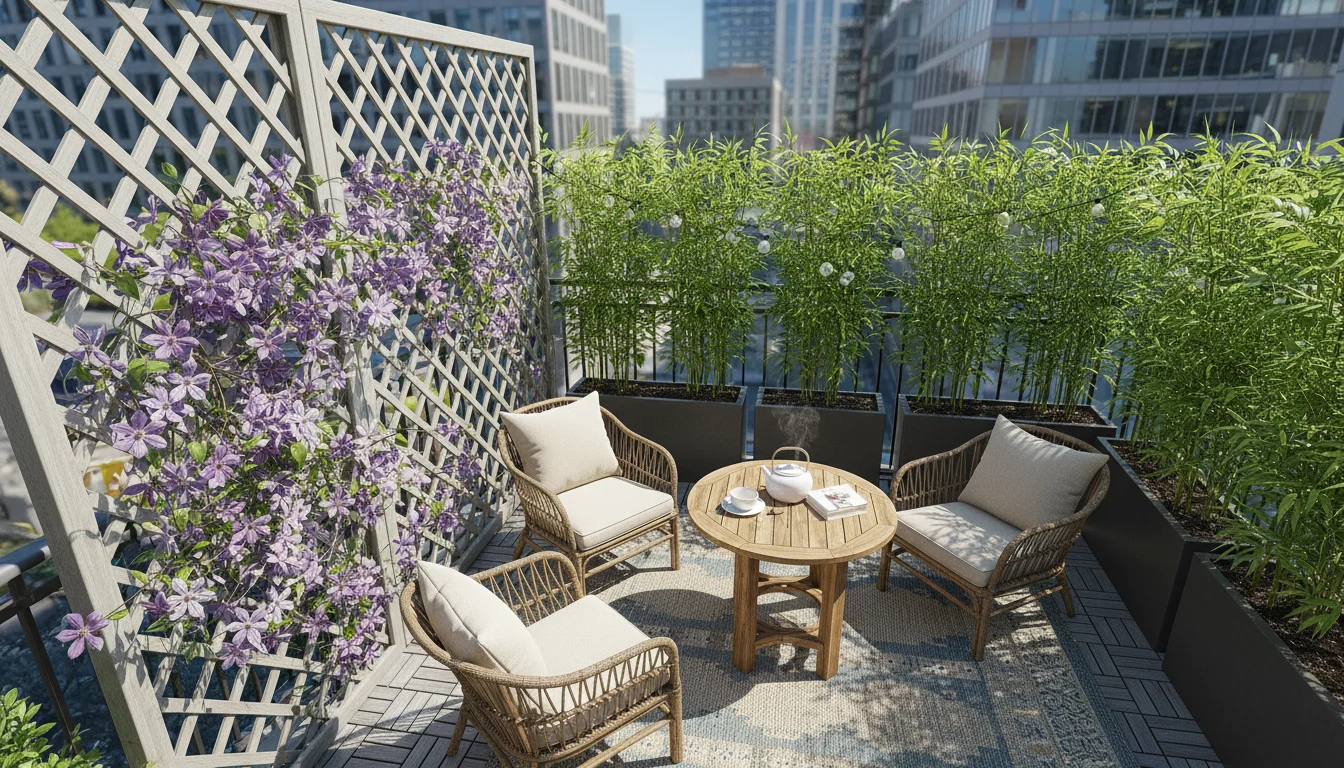
Strategic Screening Solutions
Various screening options exist, each offering different levels of privacy, aesthetics, and cost. Consider your specific needs and the overall style of your small yard design.
| Screening Type | Description | Pros | Cons | Best Use |
|---|---|---|---|---|
| Lattice Panels | Wood or vinyl open-grid panels, often used as trellises. | Affordable, lightweight, allows airflow, supports climbers. | Partial privacy unless heavily planted, needs maintenance (wood). | Good for soft screening, supporting vines. |
| Bamboo Fencing/Screens | Rolled bamboo poles or pre-fabricated panels. | Natural look, good privacy, relatively quick install. | Can weather quickly, requires anchoring, specific aesthetic. | Fast privacy, natural aesthetic. |
| Tall Planters with Plants | Large containers holding dense, upright plants (e.g., bamboo, arborvitae). | Flexible, movable, adds greenery, immediate impact. | Requires large containers, regular watering, can be heavy. | Balconies, patios, flexible privacy. |
| Shrubs/Evergreen Hedges | Planting dense, narrow-growing shrubs or evergreens. | Natural, long-term privacy, habitat for wildlife, adds beauty. | Takes time to establish, requires pruning, permanent. | Ground-level privacy, natural boundary. |
| Outdoor Curtains/Shades | Fabric panels hung from pergolas or frames. | Instant privacy, adjustable, adds softness/color. | Temporary, can blow in wind, needs regular cleaning. | Flexible, soft privacy for seating areas. |
When selecting your screening, consider factors like wind resistance, material durability, and how much light it blocks. A combination of approaches often works best. For example, a lattice panel with a vigorous climbing vine provides a lush, living screen, while a strategically placed tall planter blocks a specific sightline.
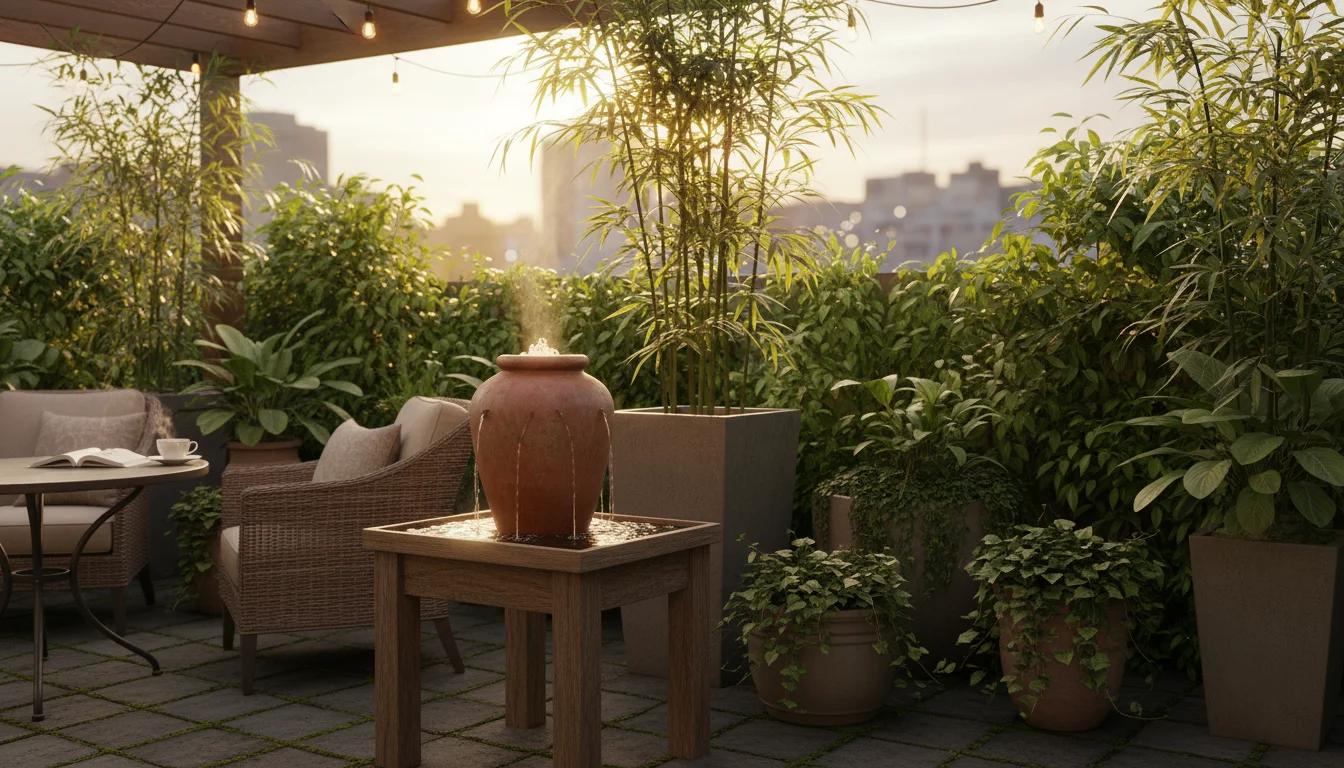
Sound Softening Elements
Beyond visual privacy, you can enhance serenity by mitigating urban noise. While you cannot eliminate all external sounds, you can introduce elements that soften or mask them. A small water feature, such as a tabletop fountain or a bubbling urn, creates gentle white noise that helps to drown out street sounds or neighboring conversations. The sound of rustling leaves from ornamental grasses or bamboo also adds a natural, calming acoustic layer. Dense planting, particularly with layered foliage, helps absorb sound waves. Consider incorporating wind chimes with soft, melodious tones, but ensure they are placed where they will not become irritatingly loud or disturb neighbors. These subtle additions contribute significantly to the peaceful ambiance of your garden oasis.
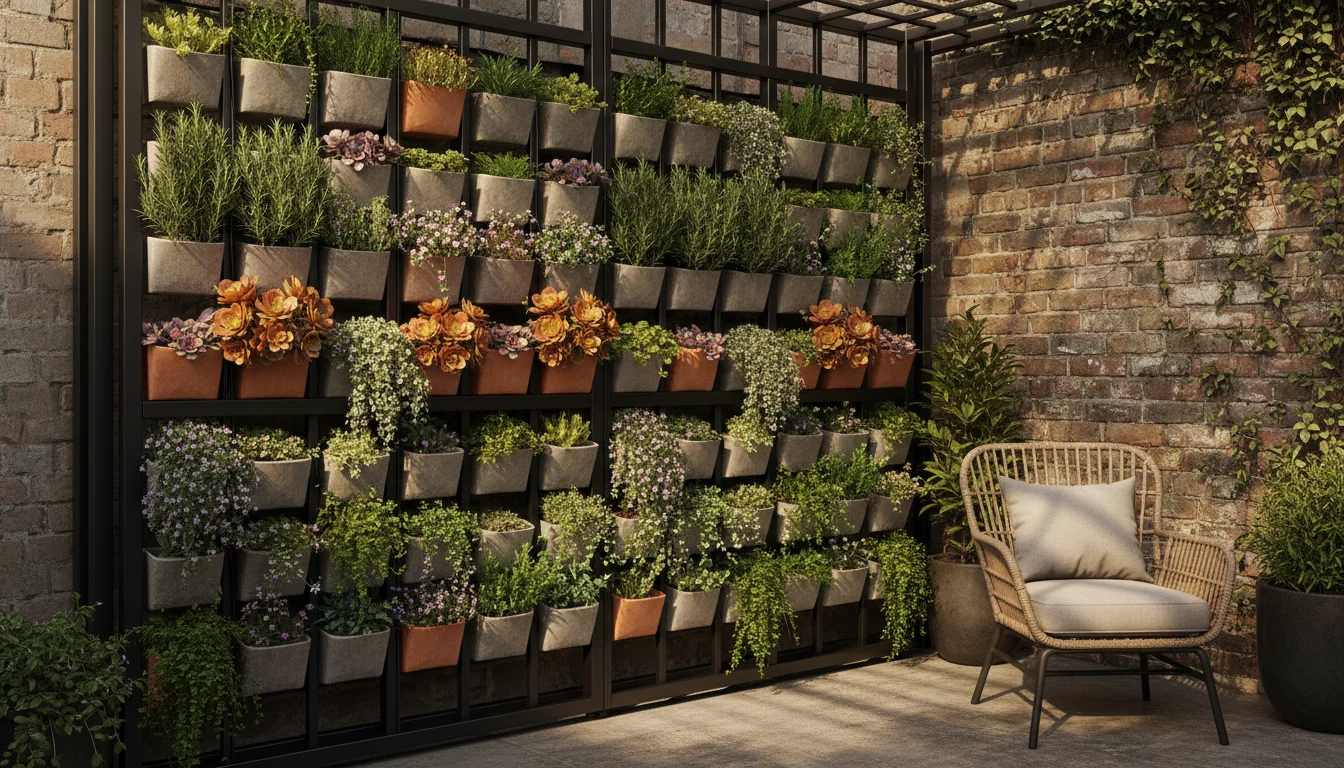
Designing for Low-Maintenance Enjoyment
A garden oasis should be a place of relaxation, not a source of endless chores. You can design a beautiful and thriving garden that requires minimal upkeep. This approach integrates smart plant choices, efficient irrigation, and sustainable practices, ensuring your garden remains a joy, not a burden.
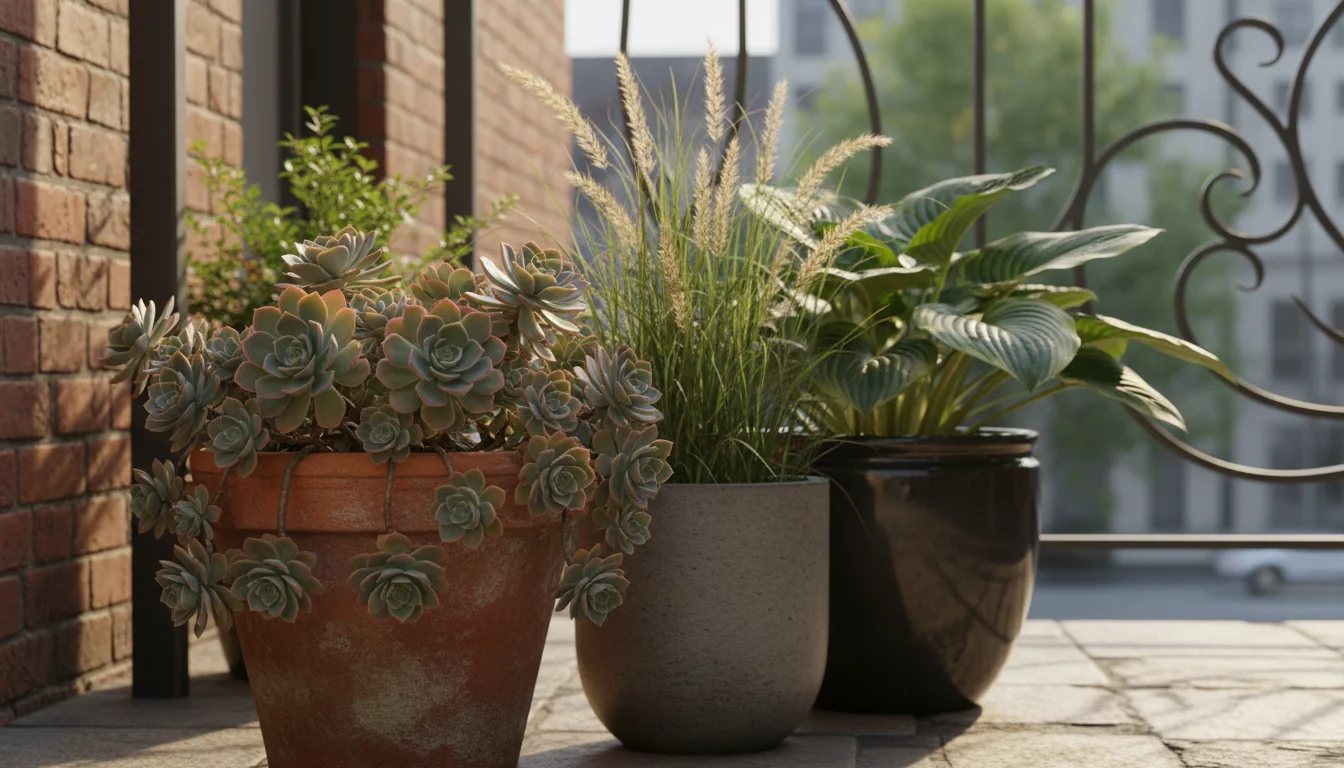
Smart Plant Choices for Reduced Upkeep
The single most impactful decision for low maintenance is plant selection. Prioritize plants that are well-suited to your specific climate and microclimate conditions. Native plants are often an excellent choice because they adapt naturally to local weather patterns, soil types, and pest pressures, reducing the need for excessive watering, fertilizing, or pest control. For instance, if you live in a dry region, choose drought-tolerant succulents, ornamental grasses, or Mediterranean herbs. In shadier spots, select hostas, ferns, or impatiens that thrive with less sunlight. Reputable sources like Oregon State Extension — Gardening provide region-specific plant recommendations. Avoid plants known for aggressive spreading, frequent deadheading requirements, or susceptibility to common pests in your area. Opt for compact varieties of shrubs and trees to minimize pruning. Consider evergreens for year-round structure and minimal leaf drop.
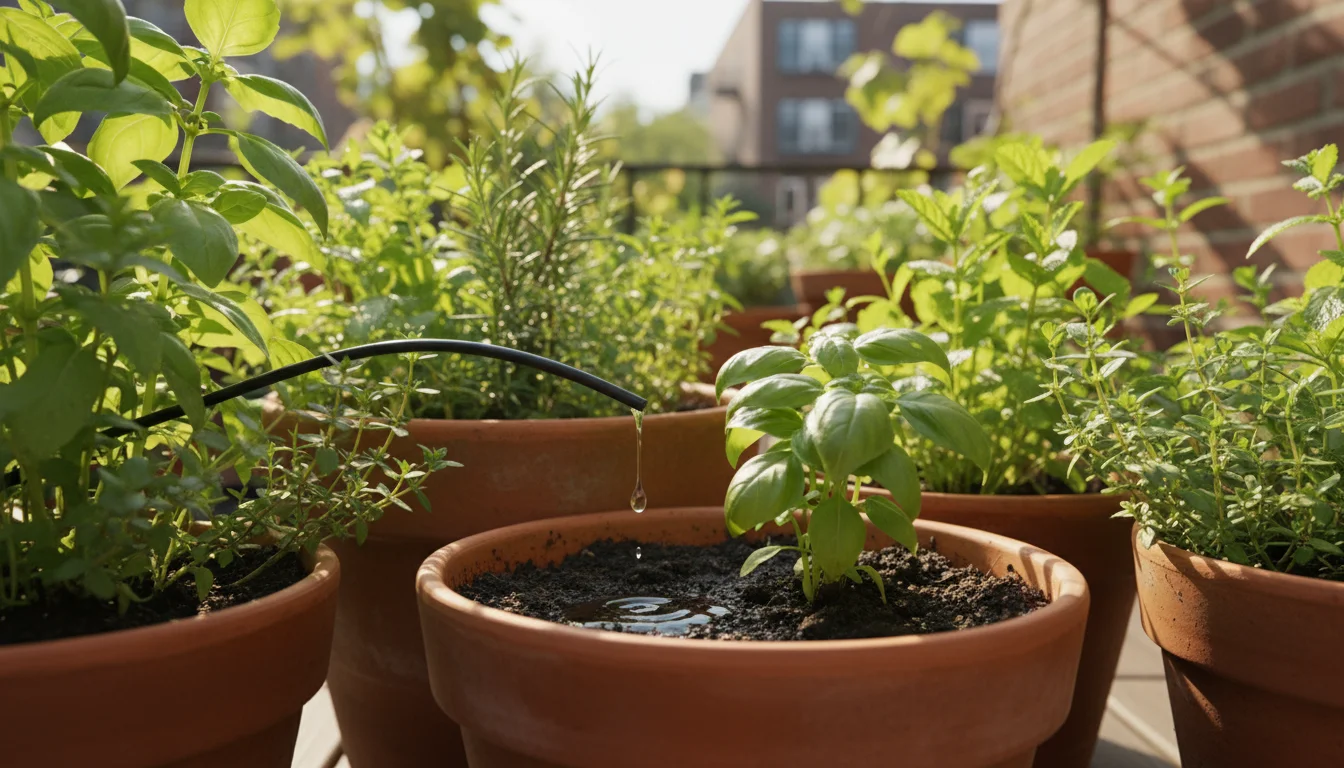
Efficient Irrigation Strategies
Watering is often the most time-consuming gardening task. You can significantly reduce this effort with an efficient irrigation rhythm. For container gardens, consider installing a drip irrigation system or self-watering containers. Drip systems deliver water directly to the plant roots, minimizing evaporation and waste, and you can often connect them to a timer. Self-watering containers feature a reservoir that wicks water up to the soil as needed, extending the time between waterings. For ground beds, apply a thick layer of mulch (2-4 inches) around your plants. Mulch suppresses weeds, conserves soil moisture by reducing evaporation, and moderates soil temperature, all of which reduce your watering frequency. When you do water, water deeply and less frequently, encouraging roots to grow deeper into the soil, making plants more resilient to dry spells. You should always check soil moisture before watering. Stick your finger two inches into the soil; if it feels dry, it is time to water.
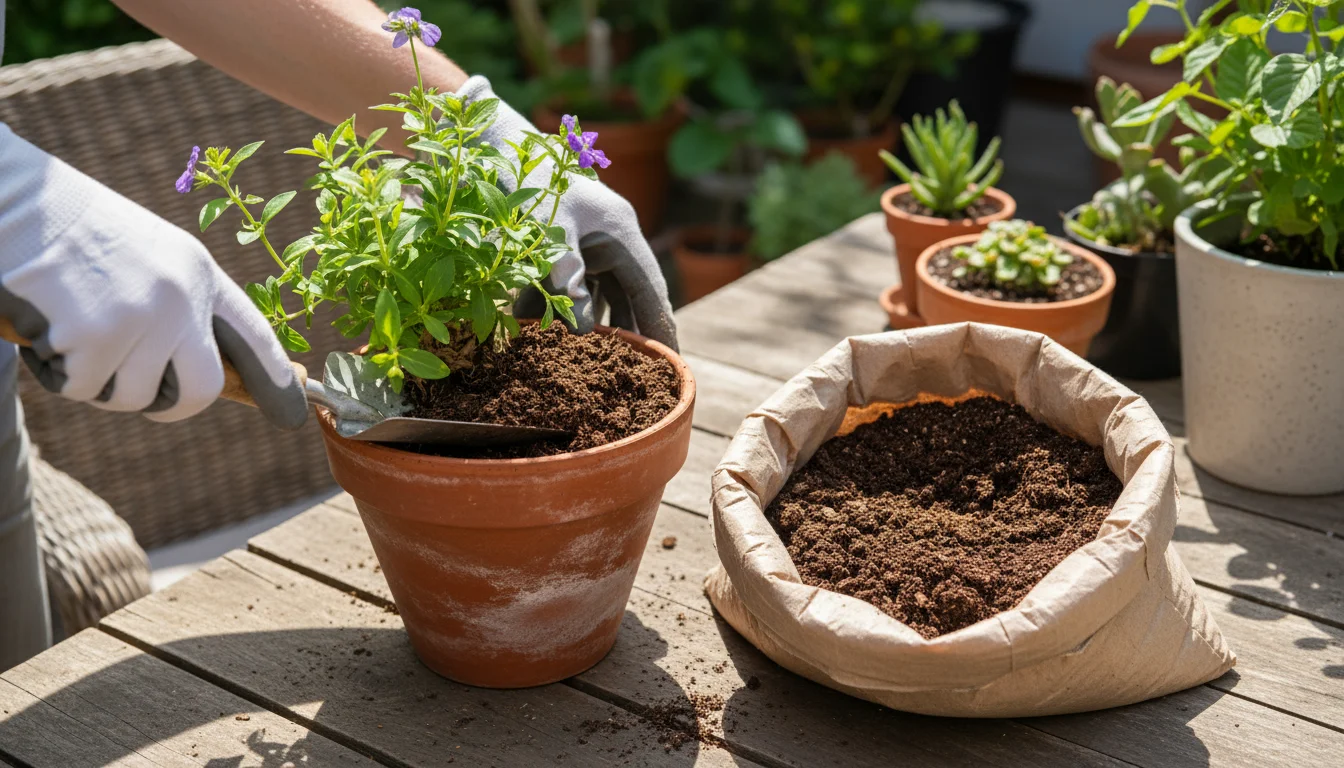
Potting Mix Refresh and Soil Health
In container gardening, the potting mix is finite and degrades over time. It compacts, loses nutrients, and can harbor salts. You must refresh your potting mix annually or every other year. You can do this by removing the top few inches of old soil and replacing it with fresh, high-quality, peat-free potting mix. For larger, perennial plants in containers, you might need to gently unpot the plant, prune back some outer roots, and add fresh soil to the bottom and sides before repotting. This process revitalizes the soil, replenishes nutrients, and improves drainage, promoting healthier plant growth. Good soil health is the cornerstone of a low-maintenance garden, as healthy plants resist pests and diseases more effectively and require less intervention from you.
For design and plant selection guidance, visit
Oregon State Extension — Gardening,
Chicago Botanic Garden,
Brooklyn Botanic Garden,
New York Botanical Garden and
Royal Horticultural Society (RHS).
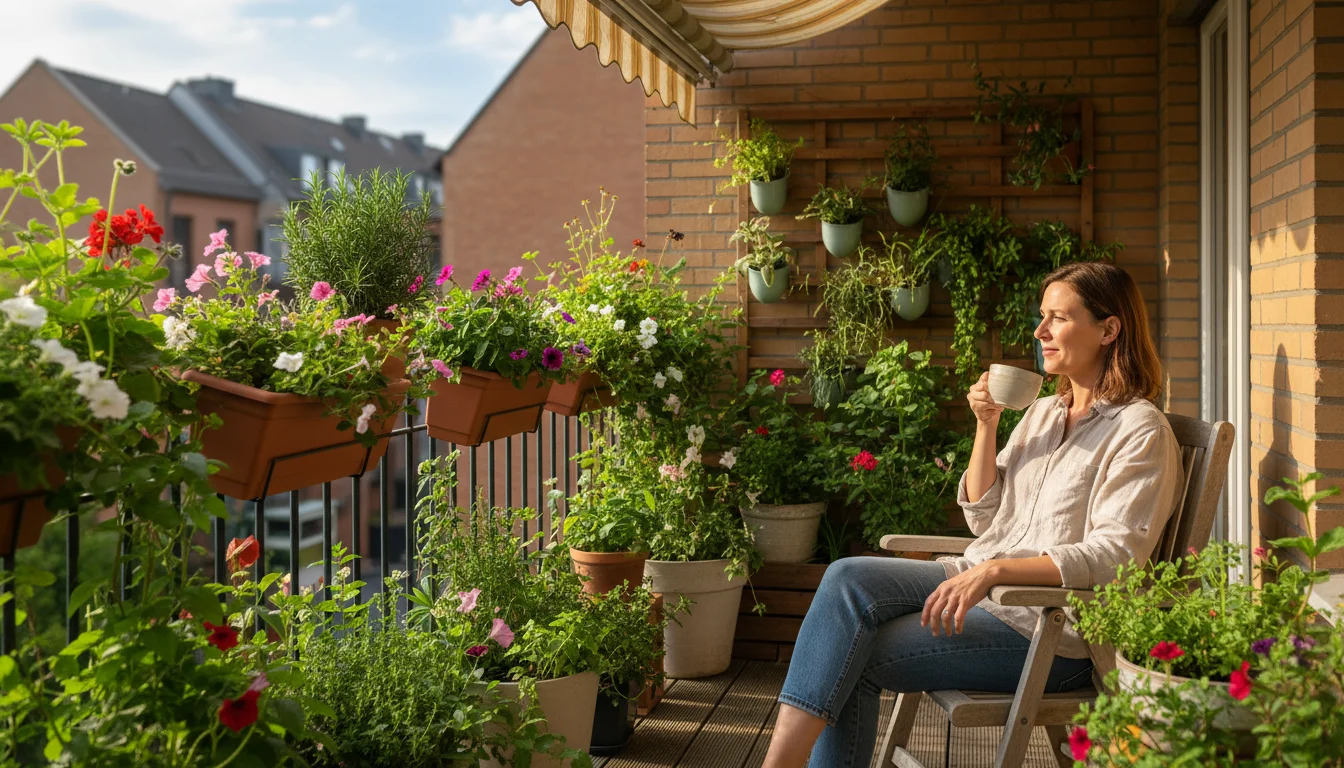
Frequently Asked Questions
What are the best plants for a tiny, sun-drenched balcony?
For a tiny, sun-drenched balcony, you want resilient, heat-tolerant plants. Consider vigorous annuals like petunias, calibrachoa, and portulaca for continuous color. Herbs such as basil, rosemary, and thyme thrive in full sun. For edibles, dwarf varieties of tomatoes, peppers, and strawberries are excellent choices for containers. Succulents like sedum and sempervivum also perform well with minimal water. Choose light-colored pots to help keep roots cooler.
How do I make my small patio feel larger?
You make a small patio feel larger by implementing several design tricks. Use light colors for paving, walls, and furniture to create an open, airy feel. Incorporate reflective surfaces, such as a garden mirror or polished metal accents, to bounce light and create an illusion of depth. Design clear pathways and keep clutter to a minimum. Emphasize vertical elements like trellises or tall planters to draw the eye upwards. Finally, limit your plant palette to a few dominant colors and textures for a cohesive, less busy look.
What kind of lighting works best for evening use in a small backyard?
For evening use in a small backyard, layer your lighting for both ambiance and functionality. String lights (fairy lights or bistro lights) draped overhead create a magical, festive atmosphere without taking up floor space. Solar-powered stake lights illuminate pathways and highlight specific plants or features. Small, low-voltage spotlights can accent a focal point, like a water feature or a piece of garden art. Avoid bright, overhead floodlights, which can create harsh shadows and glare. Ensure all outdoor lighting is rated for exterior use and installed safely according to manufacturer instructions.
Can I grow vegetables in a tiny yard?
Absolutely, you can grow a surprising amount of vegetables in a tiny yard. Focus on compact, bush, or dwarf varieties of your favorite vegetables. Vertical gardening systems, like wall planters for herbs and leafy greens, or trellises for climbing beans and cucumbers, maximize space. Utilize large containers for crops like tomatoes, peppers, and bush squash. Consider succession planting, where you plant new crops as others finish, to maximize your harvest throughout the growing season. Prioritize nutrient-rich, peat-free potting mix and consistent watering for the best results.
How do I choose sustainable materials for my small garden makeover?
You choose sustainable materials by prioritizing eco-friendly and durable options. For containers, consider recycled plastic, terracotta, or fiber-reinforced materials, avoiding virgin plastics where possible. Select natural, untreated wood for raised beds or screens, or opt for recycled composite lumber. For paving, consider permeable options like gravel or permeable pavers to reduce stormwater runoff. Always choose peat-free potting mixes, which protect peatlands, a vital carbon sink. Source plants from local nurseries to reduce transportation emissions and ensure they are well-suited to your climate. These choices reduce your environmental impact and often result in a healthier, more resilient garden.
Disclaimer: This article is for informational purposes only and is not a substitute for professional advice. Consult local extension services for region-specific recommendations.
